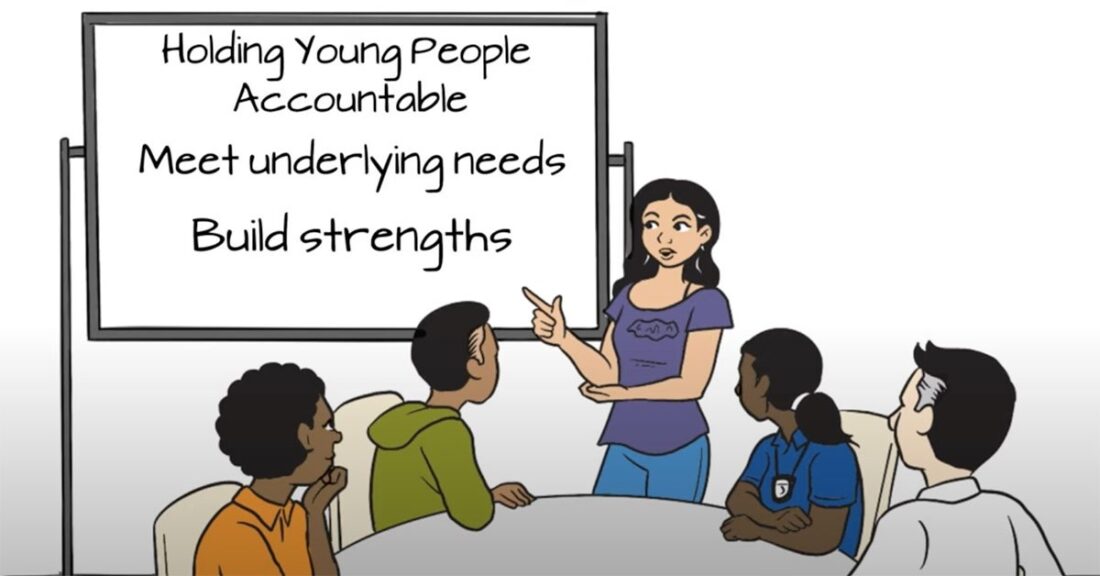Video Explains Community-led Youth Diversion From the Legal System

A short video produced by the Annie E. Casey Foundation describes a model for community-led diversion and development for youth who might otherwise face justice system involvement. It features Los Angeles County and its use of youth diversion programming by local service providers to hold young people accountable for their actions. Based on current California law, approximately 80% of youth arrests are eligible for diversion.
Los Angeles County is significantly expanding the use of diversion from the juvenile justice system because the alternative — arresting young people and formally processing their cases in juvenile court — increases the likelihood of subsequent arrests, school struggles and employment challenges. Juvenile court processing is especially detrimental for youth who are assessed as low risk of reoffending and have little or no prior record of delinquency.
While the three-minute video simplifies the story, it acknowledges the role that community outrage about the over-use of criminal punishment, especially for Black and Latino kids, played as a catalyst for more alternatives to arrest or citation. It propelled community members, young people, elected officials and practitioners to examine why so many young people were landing in the juvenile system in the first place. Collectively, these stakeholders worked to determine how to systematically steer more eligible youth in Los Angeles County away from the legal system at the point of arrest and into community-based services in lieu of formal court processing. In doing so, they prioritized input from young people affected by justice system involvement.
“The young people and other community stakeholders and the public sector had shared objectives: no unnecessary arrest, no unnecessary prosecution, just accountability and effective support for young people,” says Jaquita Monroe, senior associate with the Foundation and the video’s narrator.
Watch the video to learn more about the:
- countywide network of community-based service providers and array of developmentally appropriate services, such as therapy, homework help, arts and sports;
- inclusion of restorative justice, which guides youth to do right by the people they’ve harmed;
- ability to base services and support on a youth’s unique needs and strengths;
- pre-arrest diversion options available to law enforcement officers when they encounter young people;
- agreements among the service providers, law enforcement agencies, district attorney’s office and probation department; and
- role of the Department of Youth Development in providing structure and oversight as well as in making community investments.
“This short video exposes viewers to community-led youth diversion and development,” Monroe says. “It demonstrates what’s possible when a young person gets connected to caring adults and opportunities rather than potentially derailed by an arrest and justice system involvement.”
Additional Resources on Juvenile Diversion
Report: Expand the Use of Diversion From the Juvenile Justice System
Report: Increase Successful Diversion for Youth of Color
Report: Diversion: A Hidden Key to Combating Racial and Ethnic Disparities in Juvenile Justice






